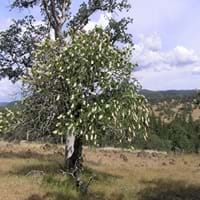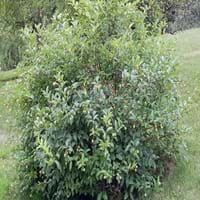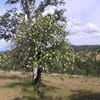Life Span
Perennial
Annual and Perennial
Origin
California
South Africa
Types
Not Available
Not Available
Habitat
Hillside
Boggy areas, Dappled Shade, Shady Edge, Sunny Edge, Woodland Garden Canopy
USDA Hardiness Zone
7-9
9-11
Sunset Zone
3a, 3b, 4, 5, 6, 7, 8, 9, 10, 14, 15, 16, 17, 18, 19, 20, 21, 22, 23, 24
H1, 14, 15, 16, 17, 18, 19, 20, 21, 22, 23, 24
Habit
Oval or Rounded
Upright/Erect
Flower Color
White, Pink
Light Yellow, Ivory
Flower Color Modifier
Bicolor
Not Available
Fruit Color
Yellow Brown
Brown
Leaf Color in Spring
Light Green
Green
Leaf Color in Summer
Green
Green
Leaf Color in Fall
Not Available
Green
Leaf Color in Winter
Not Available
Green
Leaf Shape
Oval
Egg-shaped
Plant Season
Spring, Summer, Fall, Winter
Spring, Summer, Fall, Winter
Sunlight
Full Sun, Partial Sun
Full Sun, Partial Sun
Growth Rate
Medium
Medium
Type of Soil
Clay, Loam, Sand
Loam, Sand
The pH of Soil
Acidic, Neutral
Acidic, Neutral
Soil Drainage
Well drained
Average
Bloom Time
Late Spring, Early Summer
Early Spring, Spring, Late Spring, Winter, Late Winter
Tolerances
Drought, Salt
Wet Site
Where to Plant?
Ground
Ground, Pot
How to Plant?
Seedlings
Seedlings, Stem Cutting
Plant Maintenance
Medium
Medium
Watering Requirements
Keep the ground moist but not water-logged, Requires regular watering, Requires watering in the growing season
Requires 4 to 8 inches of water above the soil line
In Summer
Lots of watering
Lots of watering
In Spring
Moderate
Moderate
In Winter
Average Water
Average Water
Soil pH
Acidic, Neutral
Acidic, Neutral
Soil Type
Clay, Loam, Sand
Loam, Sand
Soil Drainage Capacity
Well drained
Average
Sun Exposure
Full Sun, Partial Sun
Full Sun, Partial Sun
Pruning
Remove damaged leaves, Remove dead leaves, Remove dead or diseased plant parts
Prune in early summer, Remove damaged leaves, Remove dead branches, Remove dead leaves, Trim each shoot back to the first set of leaves
Fertilizers
All-Purpose Liquid Fertilizer
All-Purpose Liquid Fertilizer
Pests and Diseases
Red blotch
Red blotch
Plant Tolerance
Drought
Wet Site
Flower Petal Number
Not Available
Not Available
Fragrant Flower
Yes
Not Available
Fragrant Leaf
No
Not Available
Fragrant Bark/Stem
No
Not Available
Foliage Texture
Medium
Fine
Foliage Sheen
Glossy
Matte
Attracts
Birds, Butterflies
Butterflies
Allergy
Not Available
Toxic
Aesthetic Uses
Beautification, Landscape Designing, Showy Purposes
Showy Purposes
Beauty Benefits
Not Available
Not Available
Environmental Uses
Air purification
Air purification
Medicinal Uses
Not Available
Astringent, Diaphoretic, Diuretic, Emetic, Febrifuge, Laxative, Odontalgic, Ophthalmic, Tonic
Part of Plant Used
Fruits
Bark, Fruits, Inner Bark, Root, Wood
Other Uses
Decoration Purposes, Showy Purposes, Used as Ornamental plant
Used for woodware
Used As Indoor Plant
No
No
Used As Outdoor Plant
Yes
Yes
Garden Design
Dried Flower, Everlasting, Feature Plant, Hedges, Mixed Border, Screening, Wind Break
Bog Garden, Cutflower, Dried Flower, Everlasting, Feature Plant, Mixed Border, Tropical
Botanical Name
AESCULUS californica
BERZELIA lanuginosa
Common Name
California Buckeye
Buttonbush
In Hindi
कैलिफोर्निया Buckeye
Buttonbush shrub
In German
California Buckeye
Button Strauch
In French
California Buckeye
buttonbush arbuste
In Spanish
California Buckeye
arbusto buttonbush
In Greek
Καλιφόρνια Buckeye
Buttonbush θάμνος
In Portuguese
California Buckeye
arbusto Buttonbush
In Polish
Kalifornia Buckeye
Buttonbush krzew
In Latin
California Buckeye
Frutex Buttonbush
Phylum
Magnoliophyta
Magnoliophyta
Class
Magnoliopsida
Magnoliopsida
Order
Sapindales
Rubiales
Family
Sapindaceae
Bruniaceae
Genus
Aesculus
Cephalanthus
Clade
Angiosperms, Eudicots, Rosids
Angiosperms, Asterids, Eudicots
Tribe
Not Available
Not Available
Subfamily
Hippocastanoideae
Not Available
Season and Care of California Buckeye and Buttonbush
Season and care of California Buckeye and Buttonbush is important to know. While considering everything about California Buckeye and Buttonbush Care, growing season is an essential factor. California Buckeye season is Spring, Summer, Fall and Winter and Buttonbush season is Spring, Summer, Fall and Winter. The type of soil for California Buckeye is Clay, Loam, Sand and for Buttonbush is Loam, Sand while the PH of soil for California Buckeye is Acidic, Neutral and for Buttonbush is Acidic, Neutral.
California Buckeye and Buttonbush Physical Information
California Buckeye and Buttonbush physical information is very important for comparison. California Buckeye height is 460.00 cm and width 460.00 cm whereas Buttonbush height is 365.76 cm and width 182.88 cm. The color specification of California Buckeye and Buttonbush are as follows:
California Buckeye flower color: White and Pink
California Buckeye leaf color: Light Green
Buttonbush flower color: Light Yellow and Ivory
- Buttonbush leaf color: Green
Care of California Buckeye and Buttonbush
Care of California Buckeye and Buttonbush include pruning, fertilizers, watering etc. California Buckeye pruning is done Remove damaged leaves, Remove dead leaves and Remove dead or diseased plant parts and Buttonbush pruning is done Prune in early summer, Remove damaged leaves, Remove dead branches, Remove dead leaves and Trim each shoot back to the first set of leaves. In summer California Buckeye needs Lots of watering and in winter, it needs Average Water. Whereas, in summer Buttonbush needs Lots of watering and in winter, it needs Average Water.





